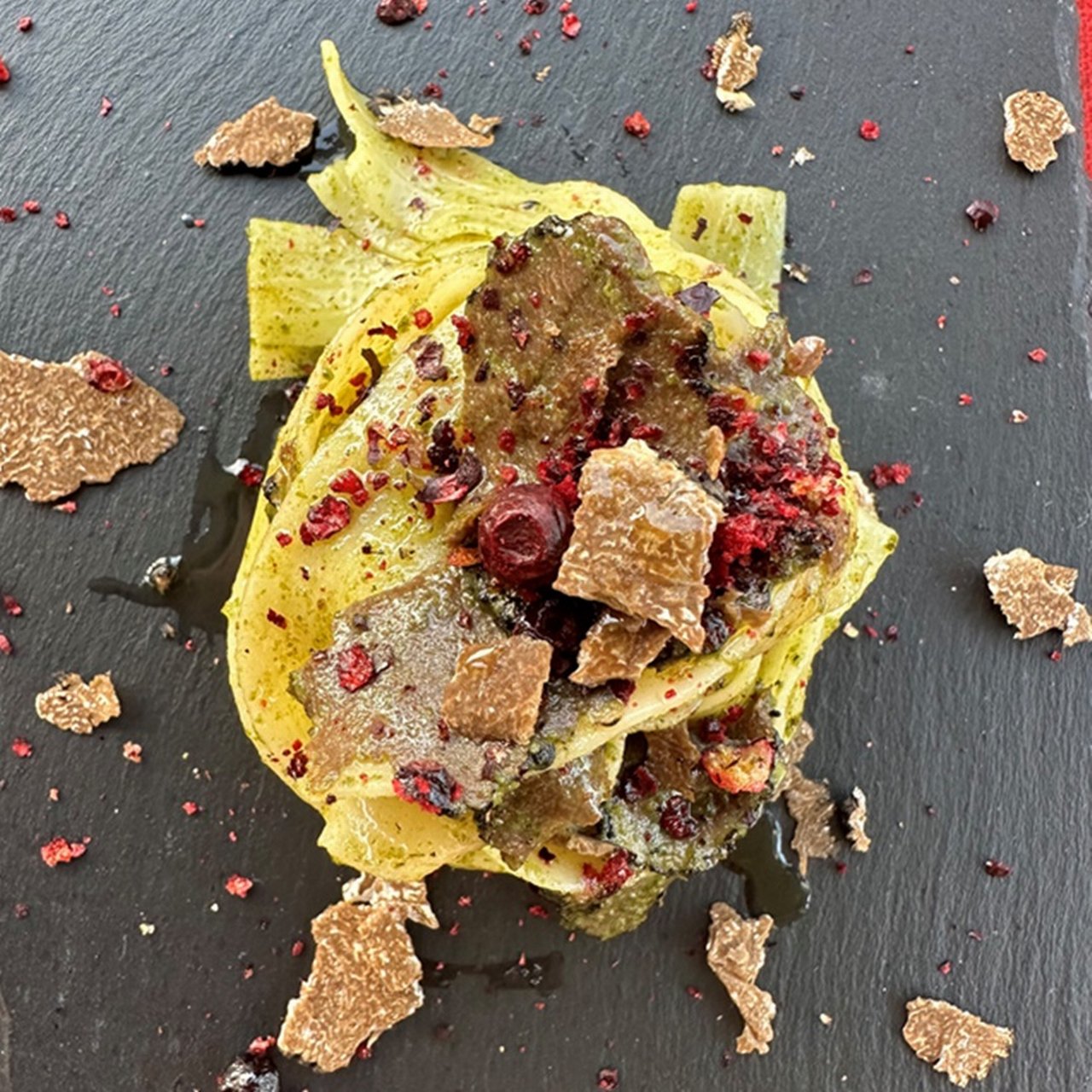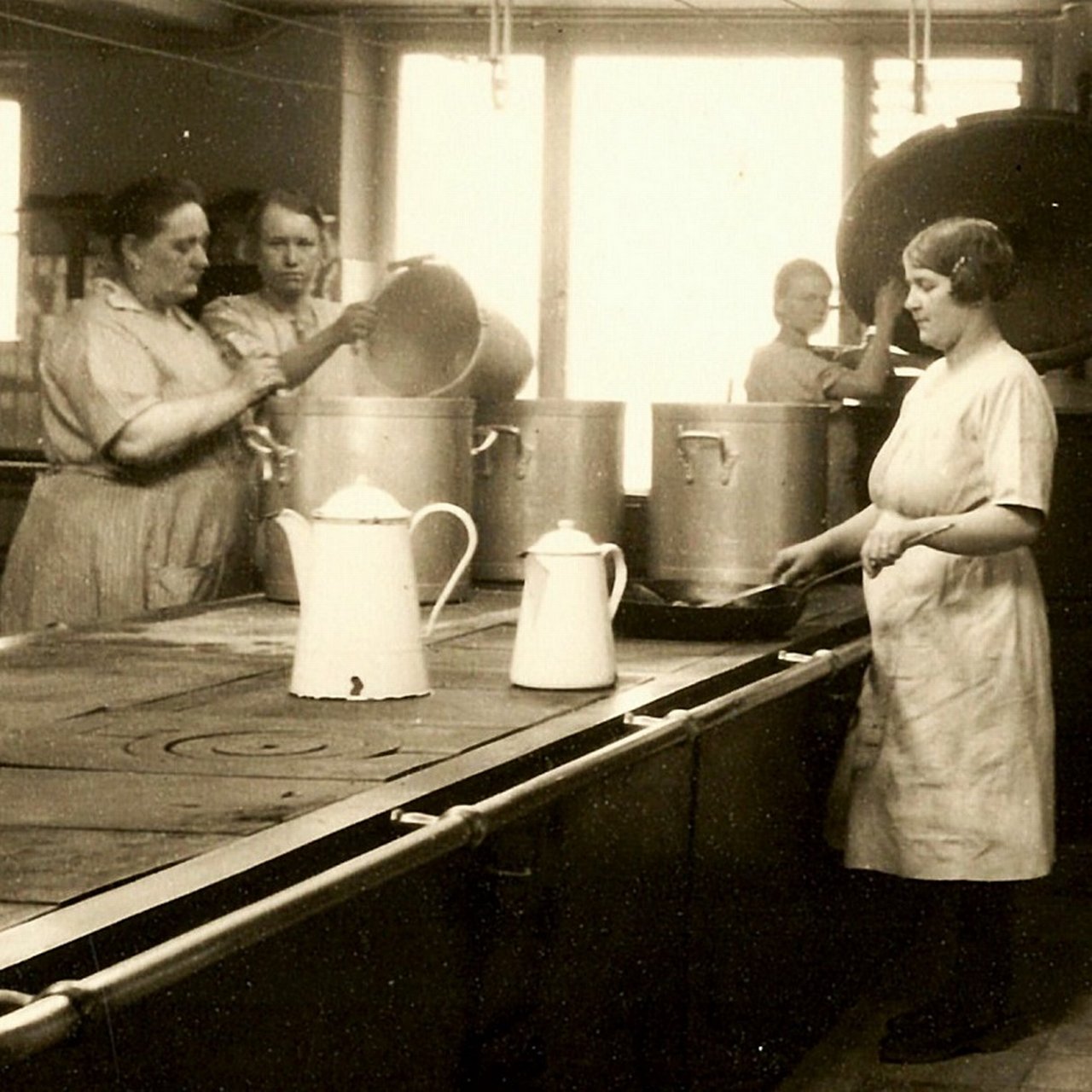
Banking on nutrition – catering through the ages
For over 130 years, Deutsche Bank has known that a good, healthy meal makes for more productive, fitter employees. Read on to explore how the bank’s canteens have evolved over more than a century.
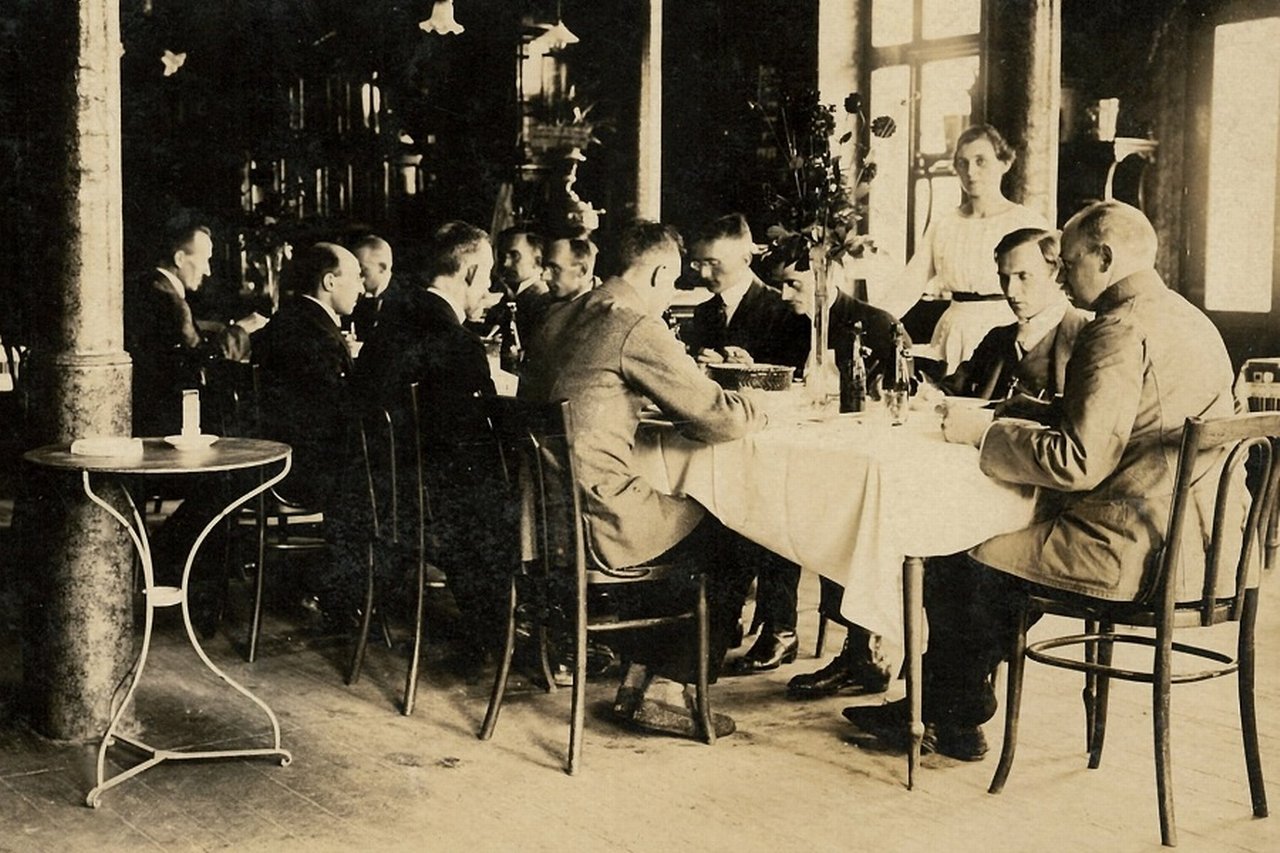
Better food – better work
During the second half of the 19th century, cities in industrialised countries experienced rapid growth. Large factories popped up along with administrative buildings where thousands of employees went to work. The changing working world also saw eating habits change, too. Until then, many people ate lunch at home, but with the increasing distance to the workplace, this became more and more rare.
For the first time in history, companies looked into the costs and benefits associated with providing meals to their staff and concluded that healthy, well-fed employees work more and better, are absent less often and also feel more connected to their company.
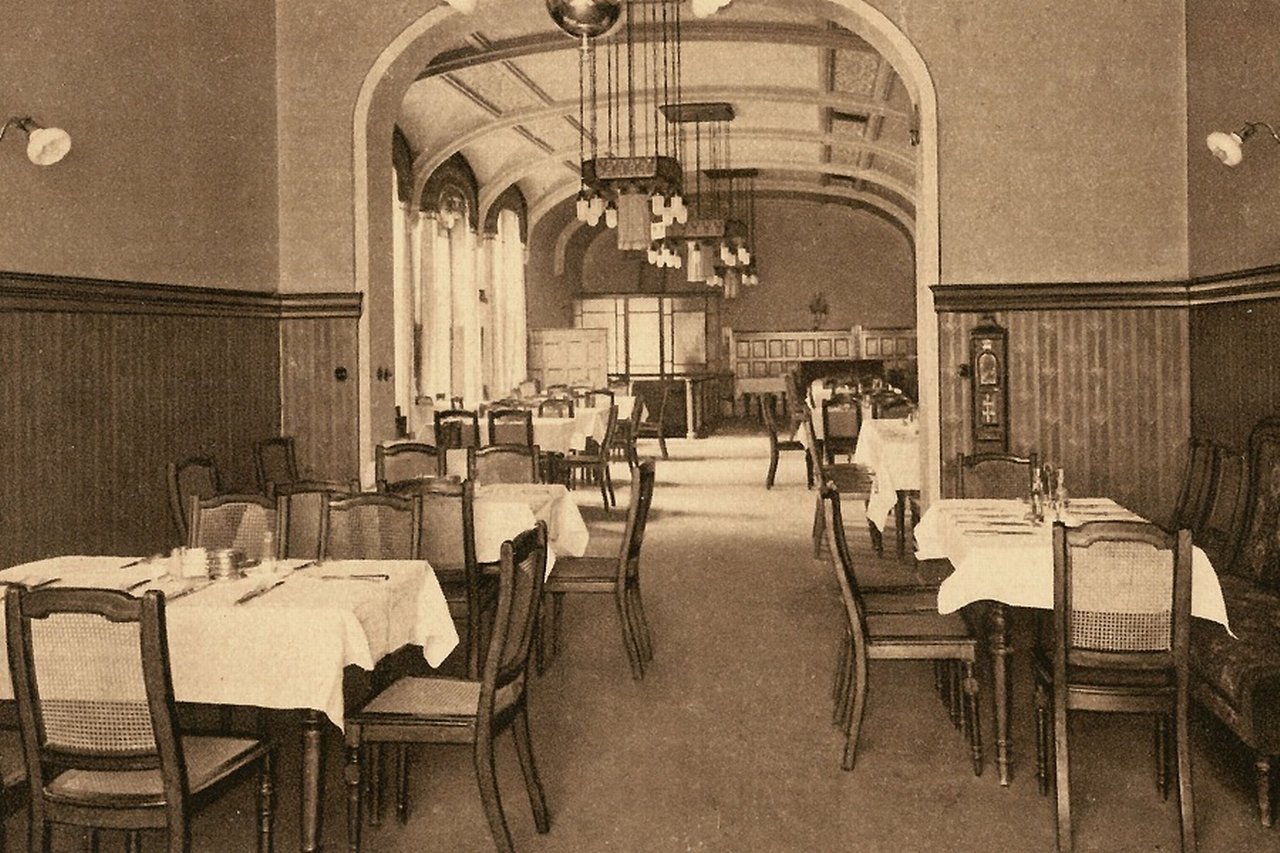
“Employees’ Club”
Motivated by this, Deutsche Bank set up an "Employees’ Club" in 1891 at its then headquarters in Berlin, where 1,000 people were employed. The intention was for the club to be "a meeting place that takes into account both the material and intellectual needs of the employees" – a place where the bank offered its employees good, inexpensive meals. At the same time, dining together was meant as a way to socialise and strengthen unity among employees.
In line with the conventions of the time, employees dined together with those of the same hierarchy and gender. One dining room was reserved for “senior” officials – people who were “authorised signatories”, with the less senior officials gathering in two other dining rooms. Women and bank clerks also ate separately. Free lunches were available to young apprentices who had demonstrated special achievements.
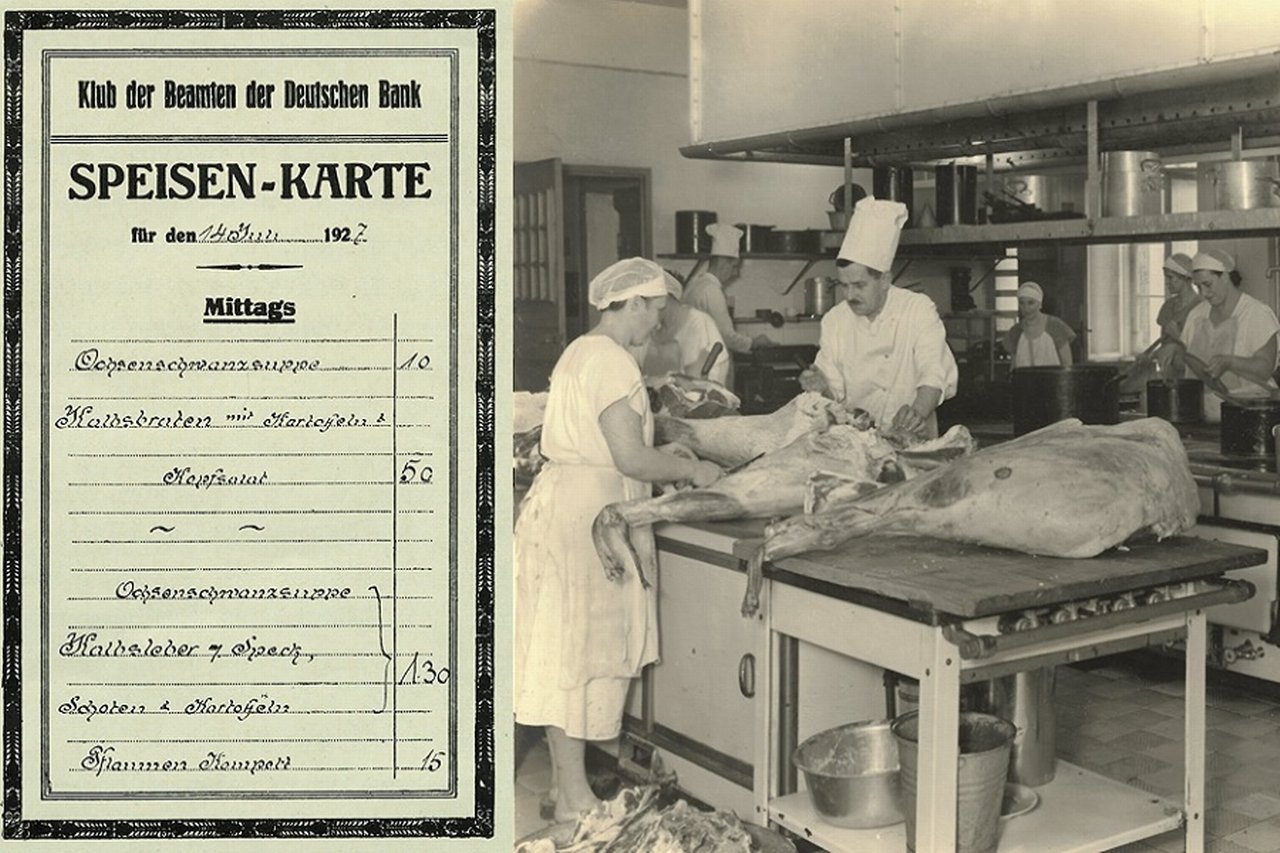
What was on the menu 100 years ago?
In the 1920s, a typical canteen meal consisted of oxtail soup, roast veal, potatoes and lettuce. After the hyperinflation of the time, it cost 60 pfennigs. In the evening, people could choose between two dishes. Roast beef with tartare sauce and fried potatoes or cauliflower with ham – both for 80 pfennigs. International cuisine was still a foreign concept in Deutsche Bank's canteen operations at that time; on offer was hearty, German homestyle cooking.
The “Employees’ Club” could seat 425 people for lunch at once, with up to 1,200 meals served during a lunch-time shift. In the evening, an average of 125 guests were served. A typical shopping list for one month in 1934 was for 17,400 pounds of meat; 2,000 pounds of fish; 2,900 pounds of butter and fats; 45,000 pounds of potatoes; 1,000 pounds of coffee and 11,000 portions of other beverages. Beer was served at lunchtime and in the evenings; employees drank 4,000 litres each month.
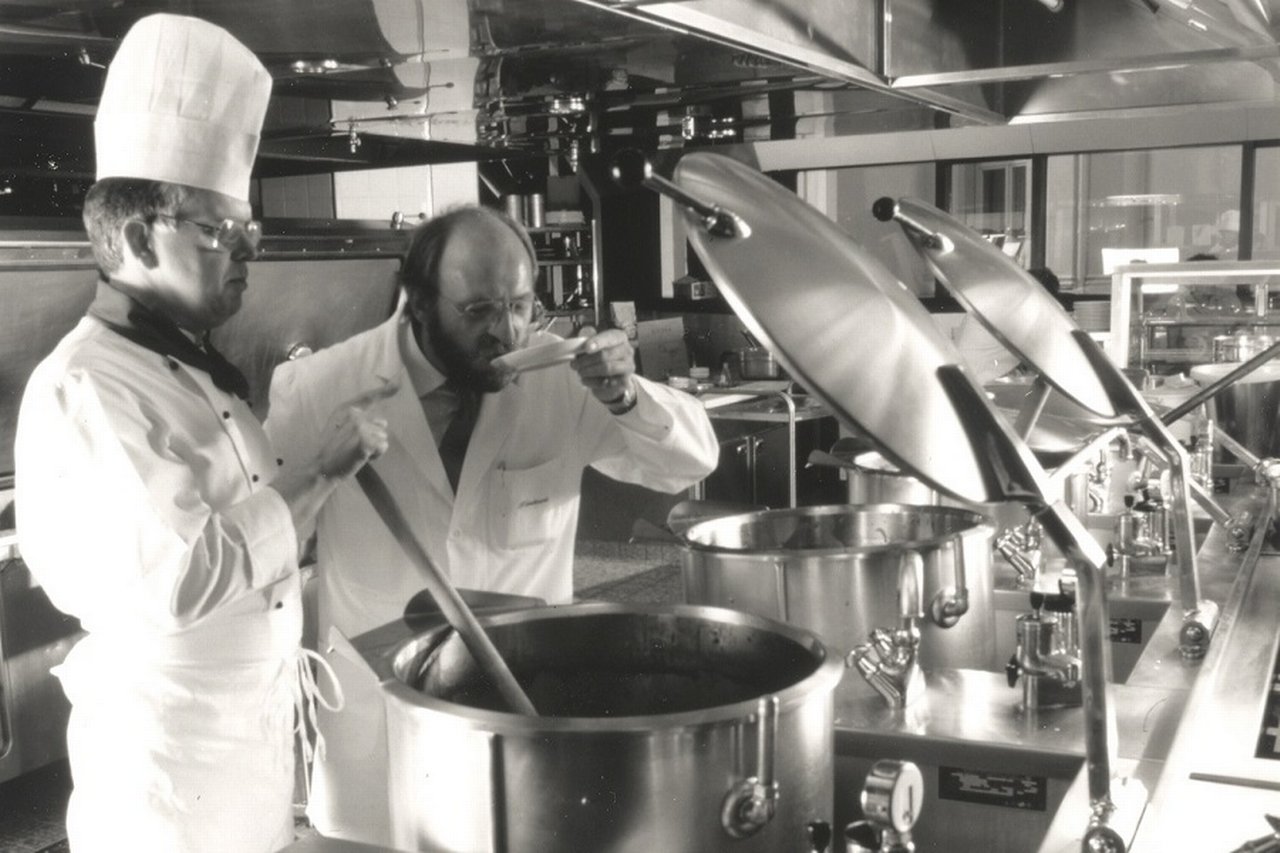
Catering not only at the hubs
Catering facilities soon followed at other Deutsche Bank locations outside of Berlin, with canteens opening before 1945 in some of the key hubs like Dusseldorf, Frankfurt am Main, Hamburg, Munich and Stuttgart.
After 1945, catering was re-organised with in-house chefs at several large branches and at the bank's main offices in Frankfurt, Dusseldorf and Hamburg. They belonged to the administrative departments of the respective branches and managed their own affairs. At some locations with medium-sized to larger branches, the food was delivered by catering companies or prepared in-house by a contracted company.
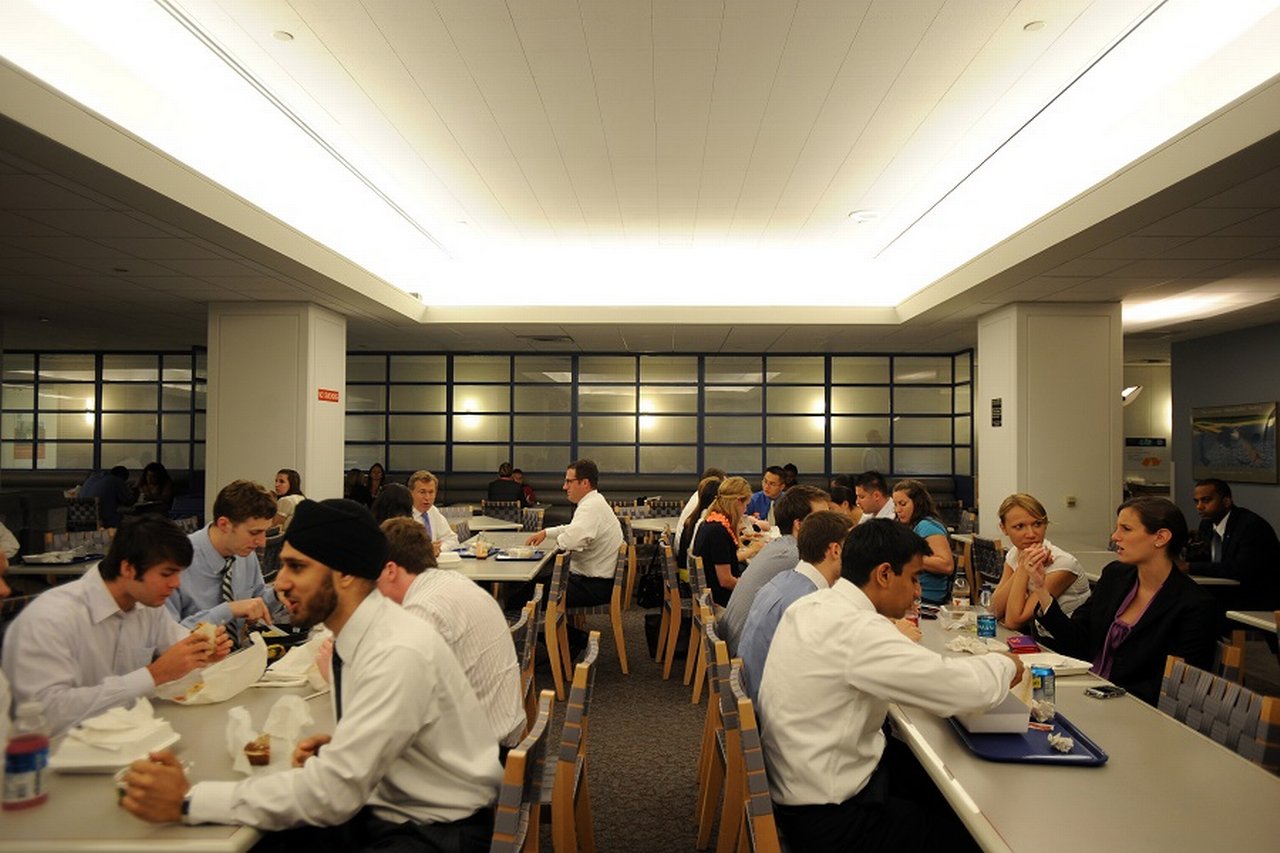
More variety since the turn of the millennium
At the end of the 1990s, Deutsche Bank operated 27 canteens in Germany alone. This meant that almost one in two employees had the opportunity to eat in a company canteen; 60 percent of them did. In branches or offices without a canteen, employees received meal vouchers that they could redeem in restaurants and shops in the surrounding area.
In properties such as the Taunus Center in Eschborn (TZE), there were small supermarkets in-house. In order to reduce costs, the eight canteens that were still under the company's own management at the end of 1997 were outsourced to professional catering companies. The new operators focused on experience gastronomy with extensive self-service buffets and freshly cooked wok and grill dishes.
The bank’s continued international expansion, its more sustainable business model and new nutritional findings have all caused a major change in the company’s staff catering strategy along with different eating habits worldwide and changing nutrition, especially in industrialised countries.
Nowadays, the topic of nutrition has moved into the focus of occupational health management, which increasingly takes social and ecological aspects into account.
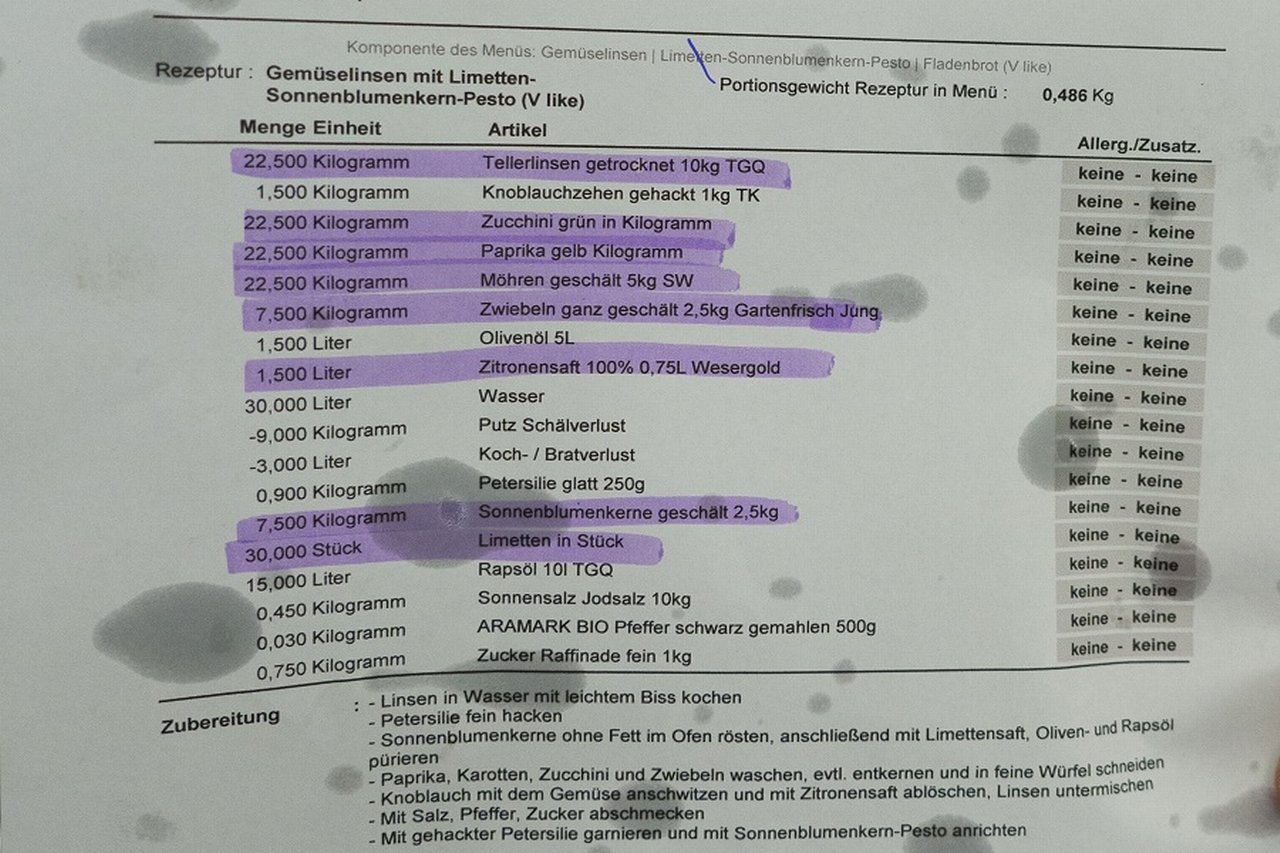
Canteen food at the bank’s headquarters in 2025
Today, around 3,000 meals are cooked every day at the company headquarters in Frankfurt in the Deutsche Bank Towers on Taunusanlage and in the Deutsche Bank Campus a little further down the road. Both canteens have been certified as “Green Canteens” since 2024. And since 2020, the different caterers with whom the bank works have all been cooking according to very specific criteria set out in a uniform food concept. Independent auditors come to the company and look at how the caterers plan the dishes, the range of food on offer, where the ingredients come from and how they are stored, as well as how much energy is used during cooking and cooling. Another important aspect is to reduce packaging and food waste. Every day, leftover food is weighed. This weight is converted into portions and displayed for everyone to see on an information board in front of the canteen.
The canteen food in the Deutsche Bank towers has had a good reputation since the beginning. Some 40 years ago, “Zeit-Magazin” judged it to be “the best catering facility we visited on our journey through the canteen landscape.”
Just as the “Employees’ Club” did over 130 years ago, the Taunusanlage canteen doesn’t just focus on providing healthy meals to all the employees who work there; it is also an important social function as the place where people from more than 70 floors of offices meet most.
This page was published in July 2025.

How Deutsche Bank preserves its history
Pictures make the past come alive – thanks to our archives, that's possible: For decades, the Historical Institute of Deutsche Bank has been critically examining the history of Deutsche Bank through its own and external research. To this end, it preserves historically important sources.
The Historical Association of Deutsche Bank has been bringing the history of banking and its political, economic and cultural environment closer to the general public since 1991.

Reinhard Frost
… has been eating at his employer's canteen for almost 30 years and looks back on times when roast beef with tartare sauce was on the menu.
Recommended content
Entrepreneurial Success | Opinion
The future of food: between climate change and high tech The future of food: between climate change and high tech
An interview with Professor Jessica Fanzo about food from a 3D printer, the use of AI, and how sustainable food systems can be shaped in the future.
Entrepreneurial Success I Insights
Conscious Consumption Conscious consumption
What really motivates us to eat more consciously: Employees share their thoughts on enjoyment, nutrition and personal changes.
Entrepreneurial Success I Video
Nothing works without water Nothing works without water
Why are some drinks so popular? Deutsche Bank's beverage expert Mitch Collett gives answers in this engaging short video.


